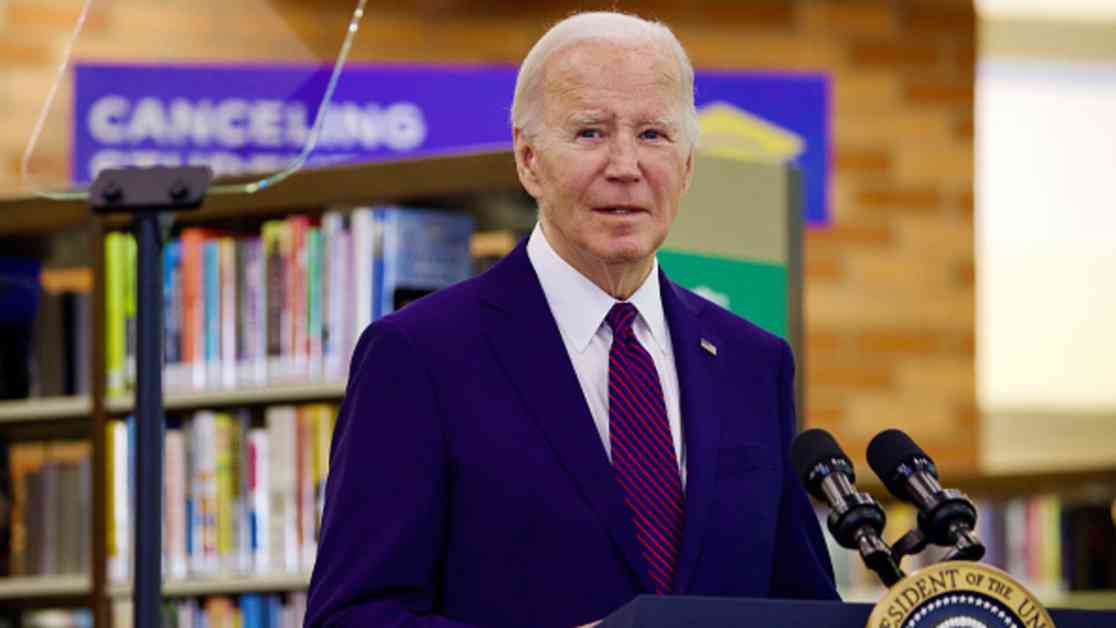President Joe Biden’s administration is gearing up to forgive the student debt of millions of borrowers, with experts predicting that this move could come into effect as early as October. The administration has recently released new guidance on who will likely be eligible for this much-anticipated relief, marking a significant departure from Biden’s initial broad student loan forgiveness efforts. The aim now is to target specific groups of borrowers in order to increase the chances of this aid package surviving potential legal challenges.
The Department of Education is currently finalizing the details of the forgiveness plan and is expected to notify eligible borrowers in the near future. Aissa Canchola Bañez, the policy director at the Student Borrower Protection Center, expressed optimism about the impact of this plan, stating, “Once these rules are finalized, 30 million Americans will get to benefit and experience the life-changing impact of student debt cancellation.”
Here are the four key groups that are expected to benefit from partial or full debt relief under the new plan:
### Borrowers who owe more than at the start of repayment
According to guidance from the Department of Education, borrowers with Direct or other Education Department-held loans who currently owe more than their initial balance when they entered repayment may qualify for up to $20,000 in debt forgiveness. The amount of relief granted will depend on how much their balance has increased over time.
Experts anticipate that the Department of Education will compare borrowers’ current balance to the total principal and interest they owed when they first began repaying their loans. Individuals enrolled in income-driven repayment plans who earn less than $120,000 annually could have the entire amount of debt that has accrued since they entered repayment, including both principal and interest, wiped out. For married borrowers filing joint taxes, the income cap is set at $240,000.
### Those already eligible for relief
Many borrowers who are eligible for debt relief may not have enrolled in the appropriate programs or applied for aid yet. Consumer advocates suggest that a significant number of student loan borrowers are unaware of the relief options available to them, such as income-driven repayment plans and the Public Service Loan Forgiveness program. The Department of Education could potentially forgive the debts of these eligible borrowers who have not taken advantage of the available assistance.
### People who have been paying for many years
If you have undergraduate student loans and began repayment on or before July 1, 2005, you are likely to be eligible for the aid. For individuals with graduate loans or a combination of undergraduate and graduate debt, repayment must have started on or before July 1, 2000, according to the Department of Education’s guidelines.
Even if borrowers have consolidated their loans at some point, the Department of Education assures them that their repayment timeline will not be reset. The agency will examine when the underlying loans initially entered repayment to determine eligibility for debt forgiveness.
### Attendees of troubled schools
In the upcoming months, the Department of Education is expected to consider cancelling some or all of the debts of borrowers who attended schools that lost their eligibility for federal funding, abruptly closed, or provided limited financial value. This initiative aims to provide relief to students who may have been negatively impacted by attending institutions facing challenges.
As the Biden administration moves forward with its plans for student loan forgiveness, it is crucial for borrowers to stay informed about the eligibility criteria and application processes. By understanding the specific groups that stand to benefit from this relief, individuals can better position themselves to take advantage of the available assistance.














